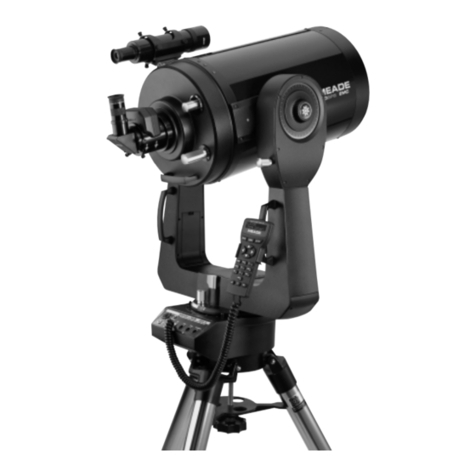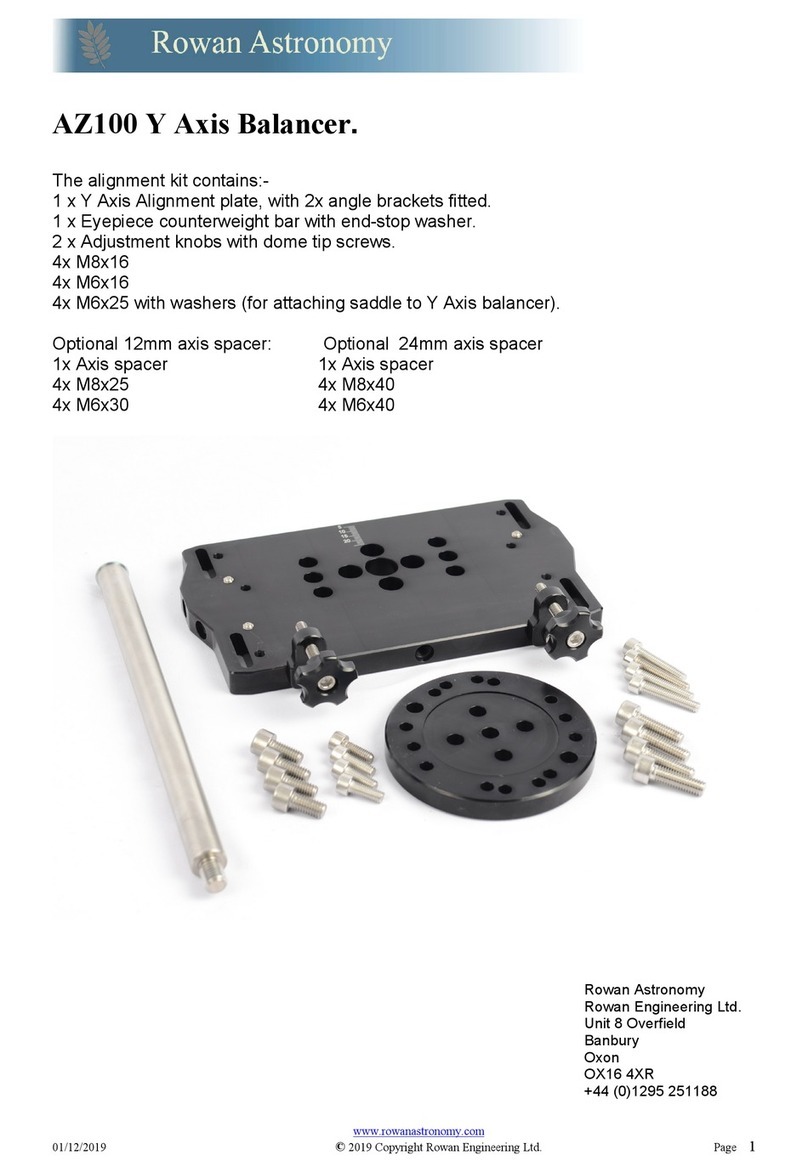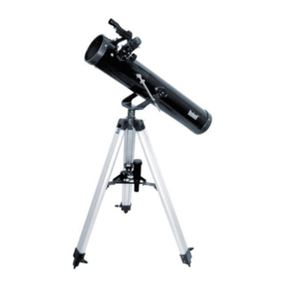Edu Science T1000HD ASTRO NOVA User manual

For additional help, please call: 1-855-863-4426
CAUTION:
Never attempt observing the sun with this telescope! Especially keep it in mind while the telescope is used by
children! Observing the sun – even for a very short time – will cause blindness!
Keep packaging materials (plastic bags, etc.) out of reach of children!
T1000HD
ASTRO NOVA HD TELESCOPE
RISK to your child!
Never look through this device directly at or near the
sun. There is a risk of
BLINDING YOURSELF!
Children should only use this device under adult
supervision. Keep packaging materials (plastic bags,
etc.) away from children. There is a risk of
SUFFOCATION!
Fire/Burning RISK!
Never subject the device - especially the lenses - to
direct sunlight. Light ray concentration can cause
fires and/or burns.
RISK of material damage!
Never take the device apart. Please consult your
Customer Service if there are any defects. The dealer
will contact our service center and send the device
in for repair if needed.
Do not subject the device to temperatures exceeding
140ºF.
TIPS on cleaning
Clean the lens (objective and eyepiece) only with a
soft lint-free cloth (e.g. micro-fibre). Do not use
excessive pressure - this may scratch the lens.
Dampen the cleaning cloth with a spectacle cleaning
fluid and use it on very dirty lenses.
Protect the device against dirt and dust. Leave it to
dry properly after use at room temperature. Then put
the dust caps on and store the device in the
packaging provided.
RESPECT Privacy!
This device is meant for private use. Respect others’
privacy – do not use the device to look into other
people‘s homes, for example.
DISPOSAL
Dispose of the packaging materials as legally
required. Consult the local authority on the matter if
necessary.
#5F5F60D
English

23
12
Fig 6
8
6
7
10
5
1
23
9
4
11

23
Your telescope has the following parts
1 Telescope tube
2 Red Dot Finder
3 Adjusting screws for finder
4 Tube opening
5 Focuser
6 Rear of Telescope
7 Flexible Shaft (Altitude Up and Down)
8 Flexible Shaft (Azimuth Left and Right)
9 Tripod head
10 26mm Plossl and 12.5mm Huygens Eyepieces
11 Locking clips (on tripod)
12 Tripod and Accessory Tray
Set-up
1. General Information regarding Assembly,
Positioning
Before beginning with the assembly, choose a suitable
position for your telescope.
It will help if you assemble
this apparatus at a spot
from where you have a clear
view of the sky, a sturdy surface beneath you, and
enough space.
Important: Tighten screws only as much as you can
by
hand - do not “over-tighten” the screws.
2. Tripod
Take the three-legged tripod and set it vertically on
the
floor with the feet pointing downwards. Now take two of
the tripod legs and pull these legs carefully out away
from each other, until they have reached their fully
opened position. During this time, the entire weight of
the tripod rests on one leg. Finally, set the tripod down
on all legs, so that it stands straight.
Loosen the three
locking clips on the tripod legs, pull
each individual
tripod leg out until it has reached the desired length
close up the locking clips and set the tripod down on a
sturdy, even surface.
TIP:
A small water level on the accessory tray can help you
position your tripod horizontally.
3. Mounting the tray:
The accessory tray must be
positioned with its flat
side down
in the middle of the tripod leg
brace, and then must be
mounted by turning it 60° in a clockwise direction.
The three projections on the tray plate must match
up to the mounting brackets on the division bars
(and must snap into place. If necessary, you may
push the tripod leg brace downwards a little.
Now set the tube (and holder) onto the mount
with
the objective opening in the direction marked
(N-marking on the tripod head, north point and
telescope figure on the mount). Then fasten the
tube holder with the clamping screw of the dovetail
adapter on the mount head.
4. Inserting the
Eyepiece
2 eyepieces: 26mm
and
12.5mm come with your
telescope. With the
eyepieces, you can control the magnification of your
telescope.
Before installing the eyepieces
and the focuser,
take the lens cap
out of the eyepiece holder.
NOTE:
Make sure the focuser is closest to the object
which you are trying to view. If the focuser is not
closest to the object the telescope is facing
backwards and the view will not be of the ground
and dark or black.
5. Aligning the Red Dot Finderscope
Your telescope is designed for terrestrial and
astronomical observations. Please keep in mind
that heat turbulences in the air are also magnified.
In warm conditions, it can be useful to limit
observations to medium magnifications.
First, remove the dust cover from the objective lens.
Please make sure to remove plastic insulator from
battery Fig 1.
Insert the 26 mm Eyepiece into the diagonal, you
may now adjust the focus with the draw tube’s
wheel. The Red Dot Finderscope is activated by
sliding the switch on its right side; there are two
intensities available. Before the first observation,
the Red Dot Finderscope has to be aligned to the
telescope. For this, point at a striking target (e.g.
telephone pole) with the telescope’s eyepiece. Now,
without moving the telescope, switch on the Red
Dot Finderscope and adjust the red dot with the 2
adjustment screws (left and right - up and down)
until it fits to the eyepiece’s view. Now the Red Dot
Finderscope is aligned and ready to point for the
telescope.
Hint:
Don’t forget to switch it off after use!
Warning:
Never use a telescope to look at the sun! Looking
at or near the sun will cause instant and
irreversible damage to your eye. Eye damage is
often painless, so there is no warning to the
observer that damage has occurred until it is too
late. Do not point the telescope or its viewfinder at
or near the sun. Do not look through the telescope
or its viewfinder as it is moving. Children should
always have adult supervision while observing.

45
6. Flexible shafts
In order to facilitate the exact fine adjustment of the
declination and right ascension shafts, the flexible
shafts have been placed on the holders of both these
shafts, in the places designed for that purpose.
The long flexible shaft is mounted parallel to the
telescope tube. It is secured with a clamp screw on
the designated indentation on the shaft.
The short flexible shaft is mounted sideways. It is
secured with a clamp screw on the designated
indentation on the shaft. Your telescope is now ready
for use.
Using the Telescope
Observation
After you have located the North Star in the finder,
you
will be able to recognize the North Star when you look
through the eyepiece of the telescope. If needed, you
can angle the telescope even more exactly toward the
star (with the help of the flexible shafts), or you can
adjust the focus with the focus knob.
Additionally, you can now switch to a higher
magni
fication by changing the eyepiece (to a smaller
focal length). Please be aware that the magnification
of the stars is barely perceptible.
TIP:
Eyepieces are lens systems designed for your
eye. In an eyepiece, the clear image that is generated
in the focal point of a lens is captured (in other words,
made visible) and magnified still more. Eyepieces
with various focal lengths are necessary in order to
achieve various degrees of magnification. Begin each
observation with an eyepiece with a low magnification
(large focal length, e.g. 26 mm).
Finding stars
In the beginning, you will certainly find it difficult
to orient yourself in the sky, since stars and
constellations are always moving, and their position
in the sky varies according to the season, date,
and time.
The North Star is an exception to this. If
you were
to imagine the polar axis of the Earth
extending out into space, it would approximately
hit the North Star. The so-called north celestial
pole is the starting point for all star charts.
On the drawing you see a number of the more
fa
miliar constellations and star clusters, which
are visible throughout the year. The position of the
stars is, of course, dependent on date and time.
If you have fixed your telescope on one of these
stars, you will notice that within a short time it
disappears from the eyepiece field of vision. In
order to compensate for this effect, operate the
flexible shaft of the counterweight axis, and your
telescope will follow the apparent path of this star.
Storing the Telescope
Hopefully your observation session will have
been interesting and successful; afterwards, it
is recommended to store the telescope in a dry
and well-ventilated room. Please do not forget
to place the lens caps back onto the front tube
opening and the eyepiece holder. All eyepieces
and optical accessories should also be stored in
their respective containers.
NOTE:
Make sure the focuser is closest to the
object which you are trying to view. If the focuser
is not closest to the object the telescope is facing
backwards and the view will not be of the ground
and dark or black.
Possible objects for observation:
We have compiled and explained a number of
very
interesting celestial bodies and star clusters
for you but we suggest that you start practicing
during the day focusing on terrestrial objects
such as Birds and or Trees at varying distances
from you.
This is just for practice, the T1000HD
telescope is not designed for terrestrial
viewing - NOTE Images will be upside down and
backwards.
On the accompanying images at the
end of the instruction manual, you can see how
objects will appear in good viewing conditions
through your telescope at varying powers (see
pictoral examples on the following page).
Capella
Perseus
Cassiopeia
Deneb
Cepheus
Ursa Minor
(Kleiner Bär)
Ursa Major
(Großer Bär)
Draco
(Drache)
Wega
Polaris
(Polarstern)

45
Terrestrial Views
Please note the example picture of Mount Rushmore.
Start with the 26mm eyepiece and focus until clear.
After mastering the focus with the 26mm change the
12.5mm eyepiece and practice focusing and scanning
until images become clear in the eyepiece. We have
included some additional examples that are possible
with your telescope such as a bird and a green on
a golf course.
DO NOT POINT YOUR TELESCOPE
DIRECTLY AT THE SUN OR BLINDNESS IS POSSIBLE.
The Moon
The moon is the Earth’s only natural satellite.
Diameter: 3.476 km
Distance: approx. 384 401 km
The moon has been known to humans since
prehistoric times. It is the second brightest object in
the sky (after the sun). Because the moon circles the
Earth once per month, the angle between the Earth,
the moon and the sun is constantly changing; one
sees this change in the phases of the moon. The time
between two consecutive new moon phases is about
29.5 days (709 hours).
Orion Nebula (M 42)
M 42 in the Orion constellation
Right ascension: 05:32.9 (Hours: Minutes)
Declination: -05º 25´ (Degrees: Minutes)
Distance: 1.500 light years
With a distance of about 1.500 light years, the Orion
Nebula (Messier 42, abbreviation: M 42) is the
brightest diffuse nebula in the sky – visible with the
naked eye, and a rewarding object for telescopes in
all sizes, from the smallest field glass to the largest
earthbound observatories and the Hubble Space
Telescope.
When talking about Orion, we‘re actually
referring
to the main part of a much larger cloud of
hydrogen gas and dust, which spreads out with over
10 degrees over the half of the Orion constellation.
The expanse of this enormous cloud stretches
several hundred light years.
Ring Nebula in Lyra constellation (M 57)
M 57 in the Lyra constellation
Right ascension: 18:53 (Hours: Minutes)
Declination: +33º 01´ (Degrees: Minutes)
Distance: 2.3 light years
The famous Ring Nebula M 57 in the constellation
of Lyra is often viewed as the prototype of a
planetary nebula; it is one of the magnificent
features of the Northern Hemisphere’s summer sky.
Recent studies have shown that it is probably
comprised of a ring (torus) of brightly shining
material that surrounds the central star (only visible
with larger telescopes), and not of a gas structure in
the form of a sphere or an ellipsis. If you were to
look at the Ring Nebula from the side, it would look
like the Dumbbell Nebula (M 27). With this object,
we’re looking directly at the pole of the nebula.
Dumbbell Nebula in the Vulpecula (Fox)
constellation (M 27)
M 27 in the Fox constellation
Right ascension: 19:59.6 (Hours: Minutes)
Declination: +22º 43´ (Degrees: Minutes)
Distance: 1.360 light years
The Dumbbell Nebula (M 27) in Fox was the first
planetary nebula ever discovered. On July 12,
1764, Charles Messier discovered this new and
fascinating class of objects. We see this object
almost directly from its equatorial plane. If you
could see the Dumbbell Nebula from one of the
poles, it would probably reveal the shape of a
ring, and we would see something very similar to
what we know from the Ring Nebula (M 57). In
reasonably good weather, we can see this object
well even with small magnifications.
NOTE : The T1000HD Telescope is not designed
for Terrestrial Viewing - Images will be
upside down and backwards.
Terrestrial Images The Moon
Orion Nebula (M 42)
Ring Nebula in Lyra
constellation (M 57)
Dumbbell Nebula in the
Vulpecula (Fox)
constellation (M 27)
f=26 mm
f=26 mm
f=12.5 mm
f=12.5 mm

6
Telescope ABC’s
What do the following terms mean?
Diagonal:
A mirror that deflects the ray of light 90 degrees. With
a horizontal telescope tube, this device deflects the
light upwards so that you can comfortably observe by
looking downwards into the eyepiece. The image in a
diagonal mirror appears upright, but rotated around
its vertical axis (mirror image).
Focal Length:
Everything that magnifies an object via an optic (lens)
has a certain focal length (FL). The FL is the length of
the path the light travels from the surface of the lens
to its focal point. The focal point is also referred to
as the focus. In focus, the image is clear. In the case
of a telescope, the FL of the telescope tube and the
eyepieces are combined.
Lens:
The lens turns the light which falls on it around in
such a way so that the light gives a clear image in
the focal point after it has traveled a certain distance
(focal length).
Eyepiece:
An eyepiece is a system made for your eye and
com
prised of one or more lenses. In an eyepiece, the
clear image that is generated in the focal point of a
lens is captured and magnified still more.
There isasimpleformulafor calculatingthemagnification:
Focal length of the telescope tube / Focal length of the
eyepiece = Magnification
You see: In a telescope, the magnification depends on
both the focal length of the telescope tube and the
focal length of the eyepiece.
Magnification:
The magnification corresponds to the difference
between observation with the naked eye and
observation through a magnification apparatus
(e.g. a telescope). In this scheme, observation with
the eye is considered “single”, or 1x magnification.
Accordingly, if a telescope has a magnification of
30x, then an object viewed through the telescope will
appear 30 times larger than it would with the naked
eye. See also “Eyepiece.“
Troubleshooting:
Mistakes:
No picture
Blurred picture
No focus possible
Bad picture
Viewing object visible
in the finder, but not
through the telescope
Help:
Remove dust protection
cap and sun-shield from
the objective opening.
Adjust focus using focus
ring
Wait for temperature to
balance out
Never observe through a
glass surface
Adjust finder
DISPOSAL
Dispose of the packaging materials
properly, according to their type (paper,
cardboard, etc).
Contact your local waste disposal service
or environmental authority for information
on the proper disposal.
Please take the current legal regulations
into account when disposing of your
device. You can get more information
on the proper disposal from your local
waste disposal service or environmental
authority.
Warning- The lens contains lead that may be
harmful. Wash hands after touching.
Product Manual, Planisphere &
Astro Software Visit:
www.exploreone.com/pages/product-manuals

#5F5F60D
Contents and colors may vary.
Le contenu et les couleurs peuvent varier.
El contenido y los colores pueden variar.
Contenuti e colori possono variare.
Inhalte und Farben können variieren.
Zawartosc i kolory moga sie róznic.
Conteúdo e cores podem variar.
Inhoud en kleuren kunnen variëren.
Do not mix old and new batteries. Do not mix
alkaline, standard (carbon-zinc), or
rechargeable batteries.
Ne mélangez pas les piles neuves et usées. Ne
pas mélanger des piles alcalines, standard (au
carbone-zinc) piles ou rechargeables.
No mezcle pilas nuevas con pilas usadas. No
mezcle pilas alcalinas, estándar (carbone-zinc)
ni recargables.
Non mischiare batterie vecchie e nuove. Non
mischiare batterie alcaline, standard
(carbonio-zinco), o ricaricabili.
Verwenden Sie nicht gleichzeitig alte und neue
Batterien. Mischen Sie keine alkalischen,
Standard- (Carbonzink) oder Akkus.
Nie mieszaj starych i nowych baterii. Nie nalezy
mieszac baterii alkalicznych, standardowych
(cynkowo-weglowych) lub akumulatorków.
Não misture pilhas velhas e novas. Não misture
pilhas alcalinas, padrão (carbono-zinco), ou
pilhas recarregáveis.
Gebruik geen oude en nieuwe batterijen door
elkaar. Gebruik geen alkaline, standaard
(koolstof-zink), of oplaadbare batterijen.
Part of the “R”US Family of Brands.
Fait partie de la famille des marques “R”US.
Forma parte de la marce de familia “R”US.
Parte della “R”US Famiglia di Marchi.
Ein Teil der “R” US Familie von Marken.
Czesc“R” US rodzinie marek.
Parte da família “R” US de Marcas.
Een deel van de “R” US Familie van merken.
EDU SCIENCE IS A MARK OF (EST UNE MARQUE DE/ES UNA
MARCA DE) GEOFFREY, LLC, A SUBSIDIARY OF (UNE FILIALE
DE/UNA SUBSIDIARIA DE) TOYS“R”US, INC.
© 2015 GEOFFREY, LLC
MADE IN CHINA (FABRIQUÉ EN CHINE/FABRICADO EN CHINA)
DISTRIBUTED IN THE UNITED STATES BY (DISTRIBUÉ AUX
ÉTATS-UNIS PAR/DISTRIBUIDO EN LOS ESTADOS UNIDOS
POR) TOYS“R”US, INC., WAYNE, NJ 07470
IMPORTED BY (IMPORTÉ PAR/IMPORTADO POR)
TOYS“R”US (CANADA) LTD. (LTÉE),
2777 LANGSTAFF ROAD, CONCORD, ON L4K 4M5
DISTRIBUTED IN AUSTRALIA BY (DISTRIBUÉ EN AUSTRALIE
PAR/DISTRIBUIDO EN AUSTRALIA POR) TOYS“R”US
(AUSTRALIA (AUSTRALIE)) PTY LTD.(LTÉE), REGENTS PARK
NSW 2143
www.toysrus.com www.toysrus.ca
Other manuals for T1000HD ASTRO NOVA
1
This manual suits for next models
2
Other Edu Science Telescope manuals

Edu Science
Edu Science T700HD User manual
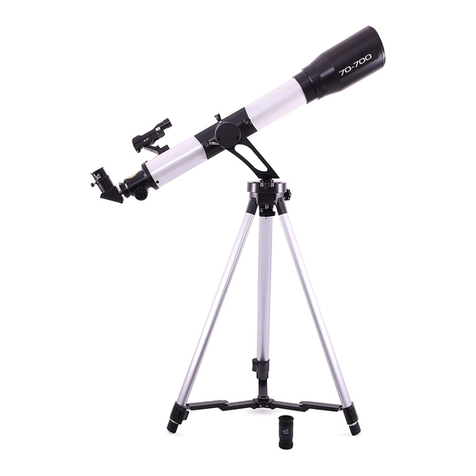
Edu Science
Edu Science ASTRO GAZER User manual
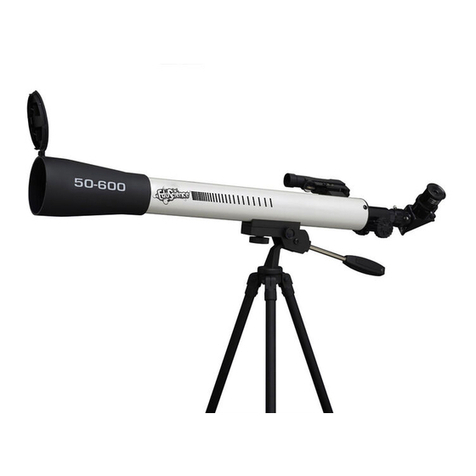
Edu Science
Edu Science T600 User manual
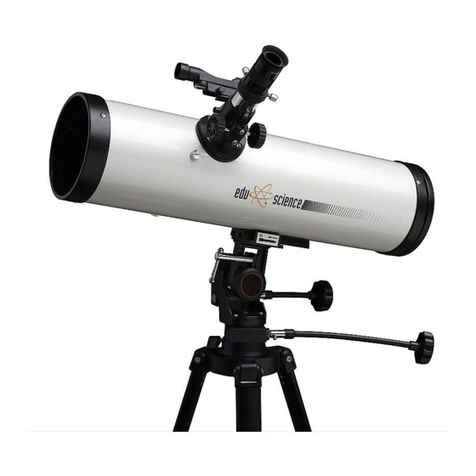
Edu Science
Edu Science T1000HD ASTRO NOVA User manual
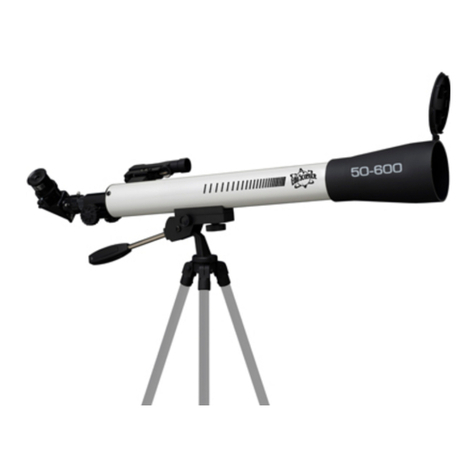
Edu Science
Edu Science T600 User manual
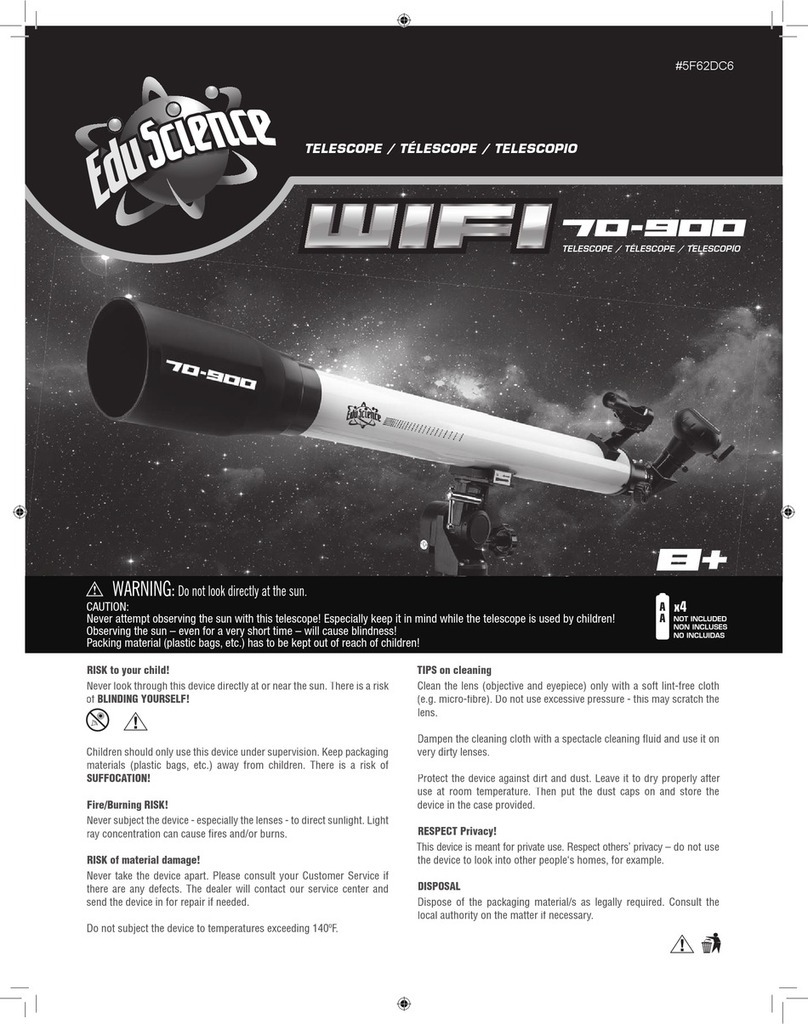
Edu Science
Edu Science WIFI 70-900 User manual
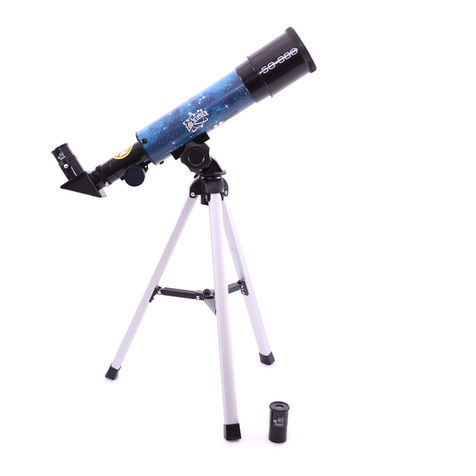
Edu Science
Edu Science T360 User manual
Popular Telescope manuals by other brands
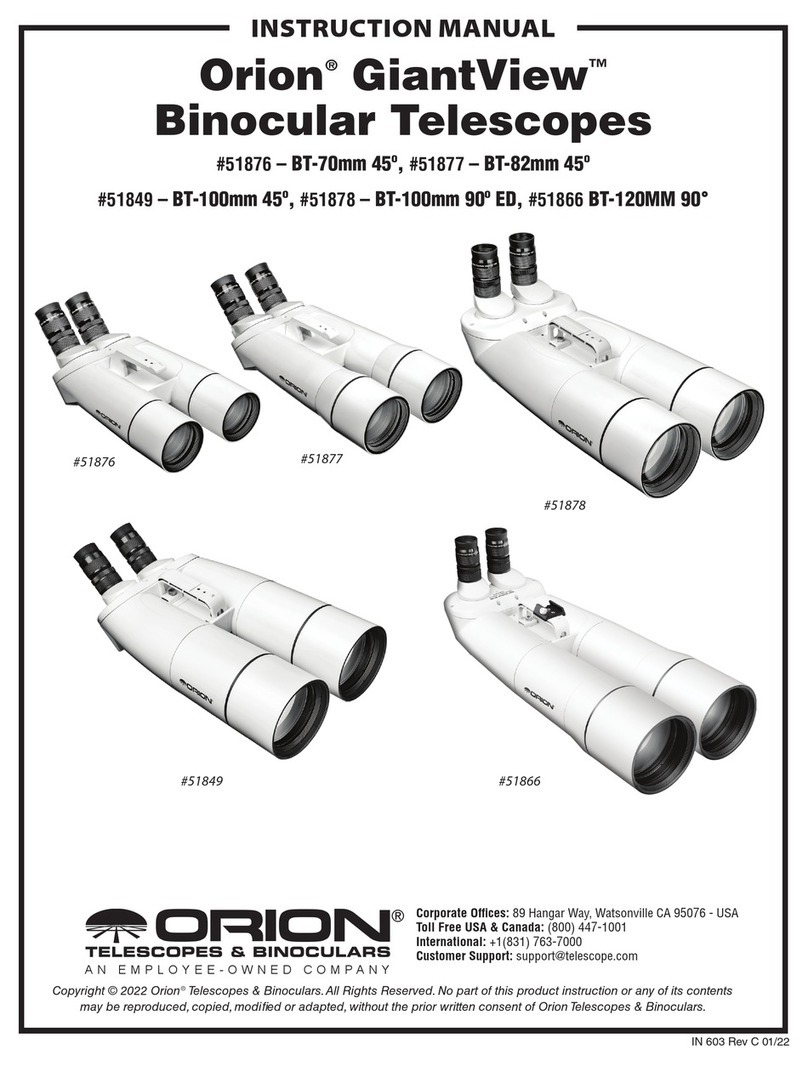
ORION TELESCOPES & BINOCULARS
ORION TELESCOPES & BINOCULARS GiantView BT-70mm instruction manual
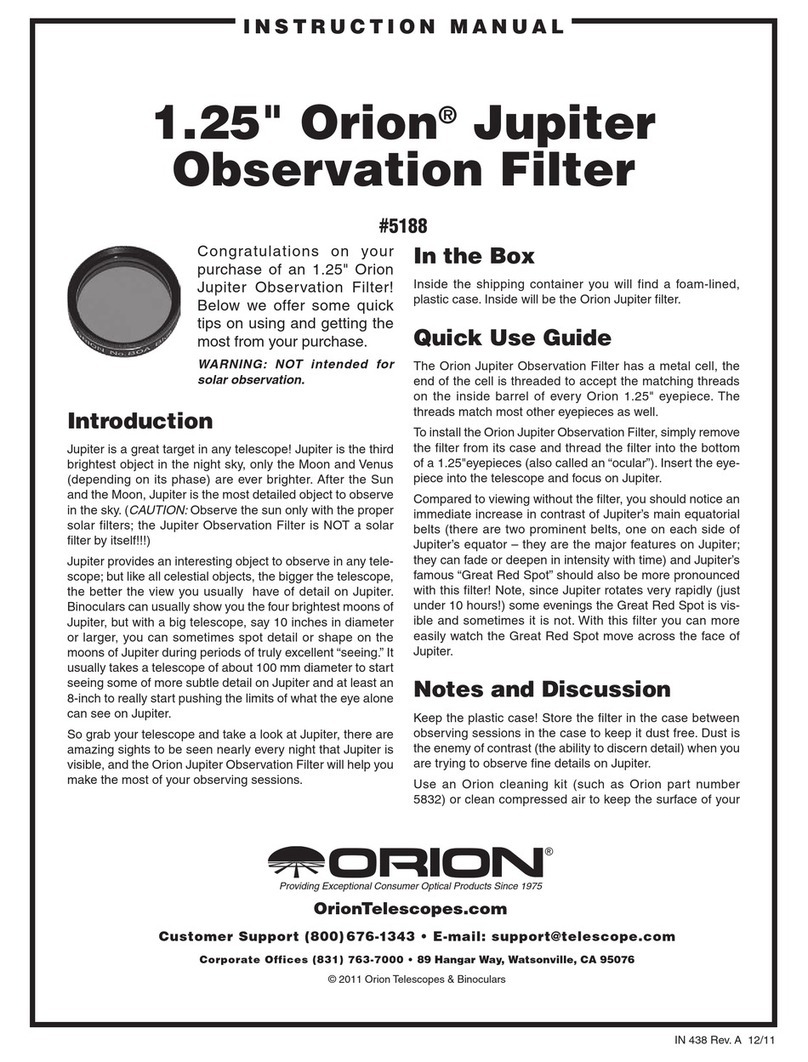
Orion
Orion 5188 manual

Meade
Meade 70AZ-TR instruction manual
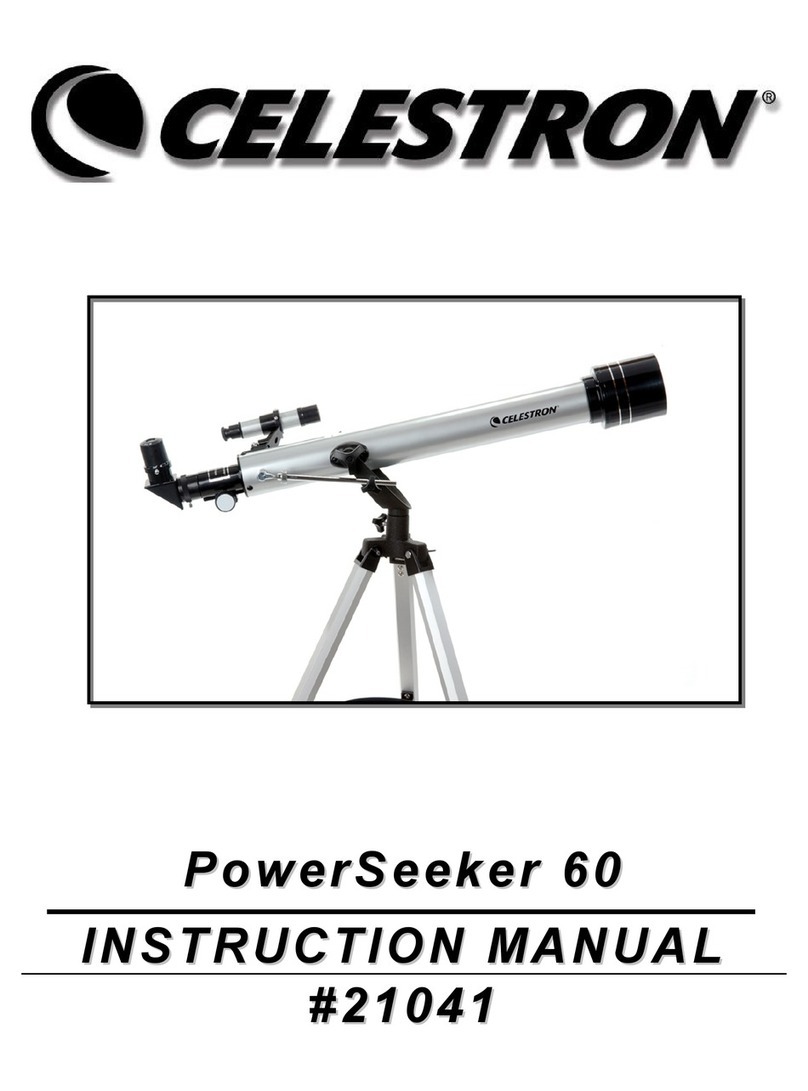
Celestron
Celestron PowerSeeker 21041 instruction manual

SitePro
SitePro SP24XC Operating/safety instructions
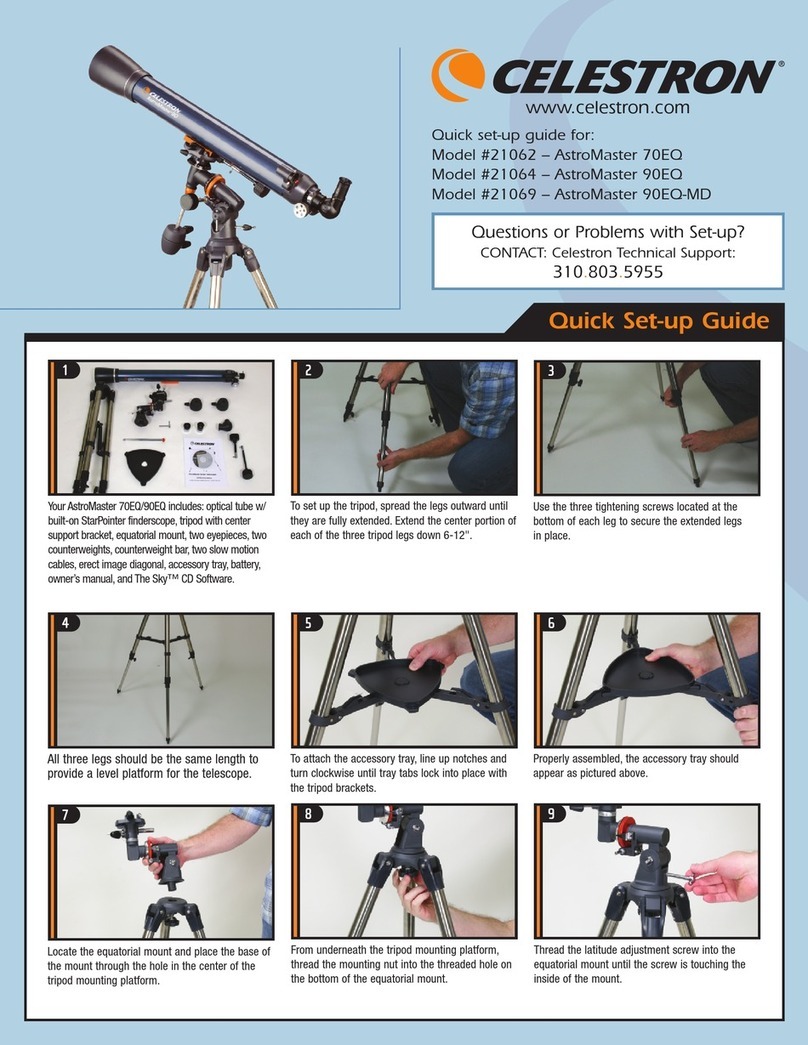
Celestron
Celestron AstroMaster 90EQ Quick setup guide

